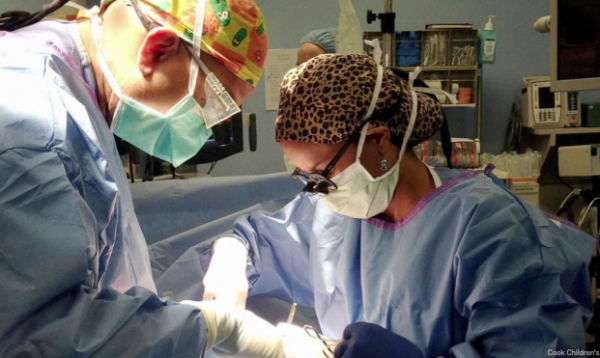Twin sisters Brittani James and Brandi Jackson are two-thirds of a civil rights organization spearheading the charge to eradicate the medical field of racial disparities.
Together, James, Jackson, and Jessica Richardson, MD, formed the Institute for Antiracism in Medicine (IAM). Their goal is to educate physicians of the implicit biases taught in medical school that leads to misdiagnosis, mistreatment, and sometimes death of people of color.

“We’re teaching how to see it and how to undo it,” Jackson told The Associated Press. Jackson, a family medicine practitioner, and Jackson a psychiatrist, are lifting the veil on racism naïveté by teaching their antiracism coursework at two Chicago-area medical schools.
But not so long ago both James and Jackson were little girls growing up on the less economically stable side of Twinsburg, Ohio. They were gifted students attending mostly white schools, where they were seen as the exception. James even recalled a white classmate telling her, “I don’t even think of you as Black.” At the time James perceived the notion to be a compliment, maybe even a right that others in her community would never have.
“I believed we were special. I believed other people in our neighborhood weren’t as good as us.”
The future Black doctors would have a different viewpoint by the time they became physicians.
Texas physician and just the ninth Black female pediatric surgeon Dr. Kanika Bowen-Jallow recently discussed how the lack of Black physicians during her residency became evident when a client thought she was a member of the janitorial staff.
“A woman looked at me and asked if I was there to change the sheets,” Bowen-Jallow recalled.“I was rather taken aback by that, but of course, it wasn’t the first or the last slight I’ve ever encountered.”

In an IAM blog post titled, “Racism in Medicine is Killing Minoritized Patients,” the authors say, “racism silently colors the vast majority of current medical thought, policy, and educational endeavors.”
“If physicians and other medical professionals do not work to first accept that they hold racist beliefs — which we all do if we are not actively doing the work of challenging them — everything they do as a physician will be biased by racism,” continues the post. “That includes the research they create, the medical students and trainees they teach, the patient care they deliver.”
The post goes on to describe how to describe how modern medicine recommends race-specific assessments for conditions such as hypertension, lung function and kidney function, asserting that recognizing any racial biophysical differences in patient treatment is racist.
The notion that doctors, who by career choice may view themselves as benevolent, assume they cannot be racist sparked outrage from critics after the publication of a since-deleted podcast episode by the Journal of the American Medical Association (JAMA).
During the podcast episode titled “Structural Racism for Doctors — What Is It?” Dr. Ed Livingston suggested the disparity of medical care between Black and white people was not at all rooted in race.
“What you’re talking about isn’t so much racism . . . it isn’t their race, it isn’t their color, it’s their socioeconomic status. Is that a fair statement?” Livingston maintained.
A 2014 World Journal of Psychiatry study assailed the idea of not using cultural background as a factor to calibrate the care practices when dealing with patients of color. “Cultural sensitivity is imperative when providing services to consumers in the field of healthcare … awareness of the significance of culture may correct mistaken interpretations of psychopathology.”
In 2019, the American Association of Medical Colleges (AAMC) reported that 3 three percent of doctors identified as Black. Meaning less representation for patients who are not white, and oftentimes less willingness for a physician to fully hear the concerns of patients of color.
Dr. Gerald Harmon, soon-to-be president of the American Medical Association — the largest governing body overseeing the promotion of medical science and betterment of public health — said the AMA is already in the process of addressing the structural racism of the medical field.
“We’re working very hard at AMA to increase not just diversity in the health care work force but in understanding of health inequities,” said Harmon.
Part of AMA’s diversity plan includes:
- Adding staff from Black, hispanic, indigenous and LGBTQ communities
- Advocate for health equity government policies
- Develop and implement antiracism training for medical students, doctors and health systems


